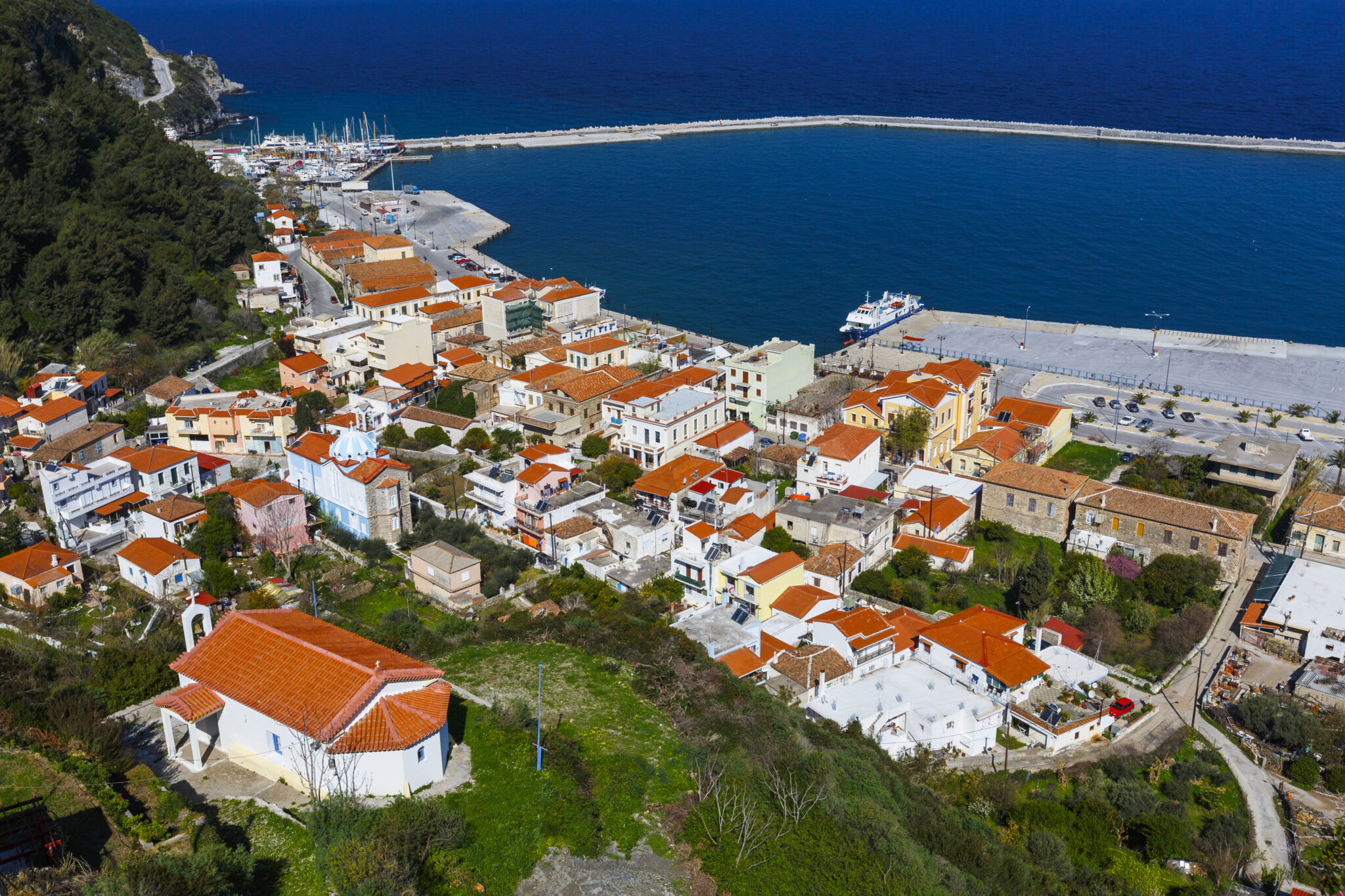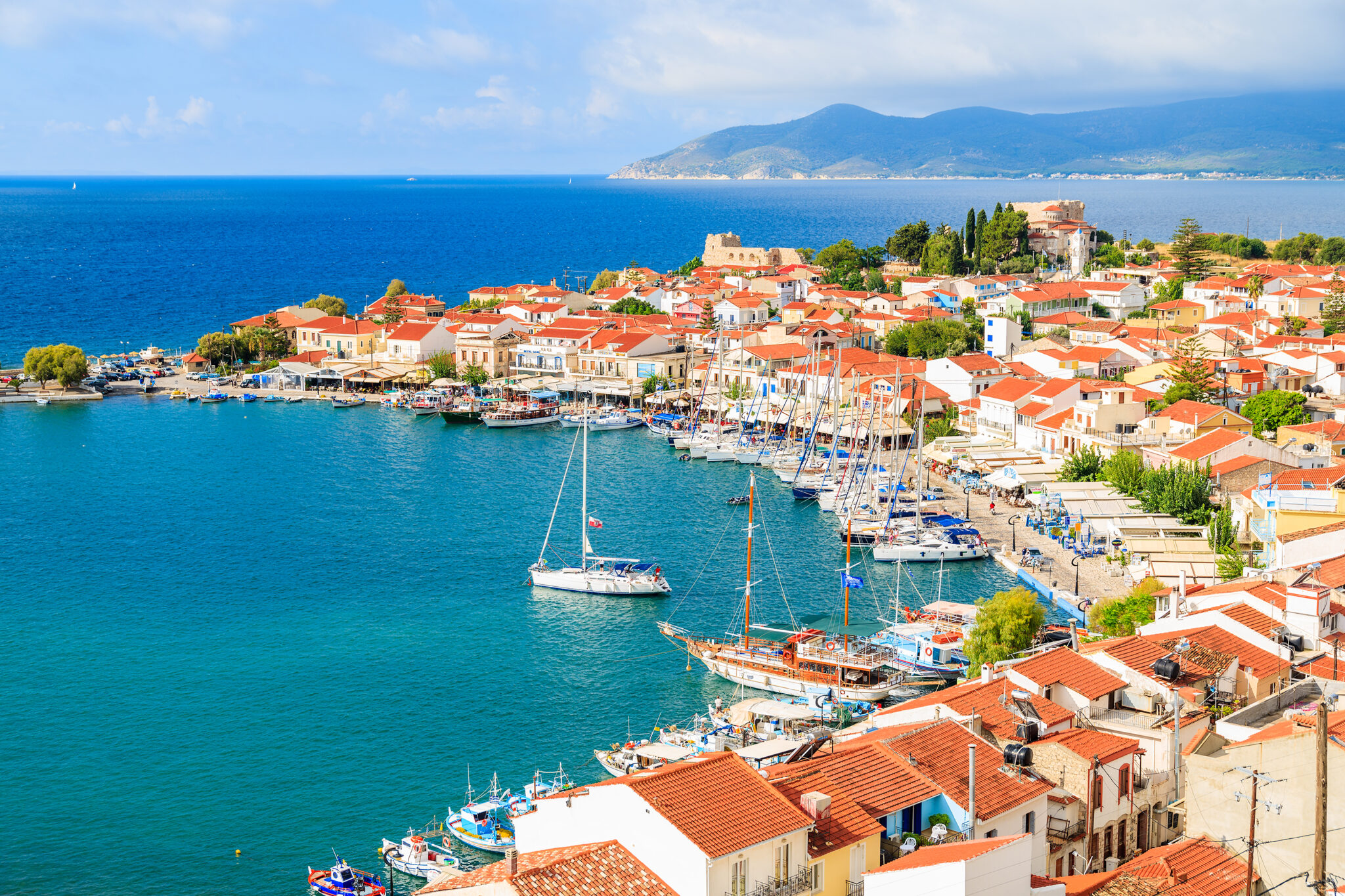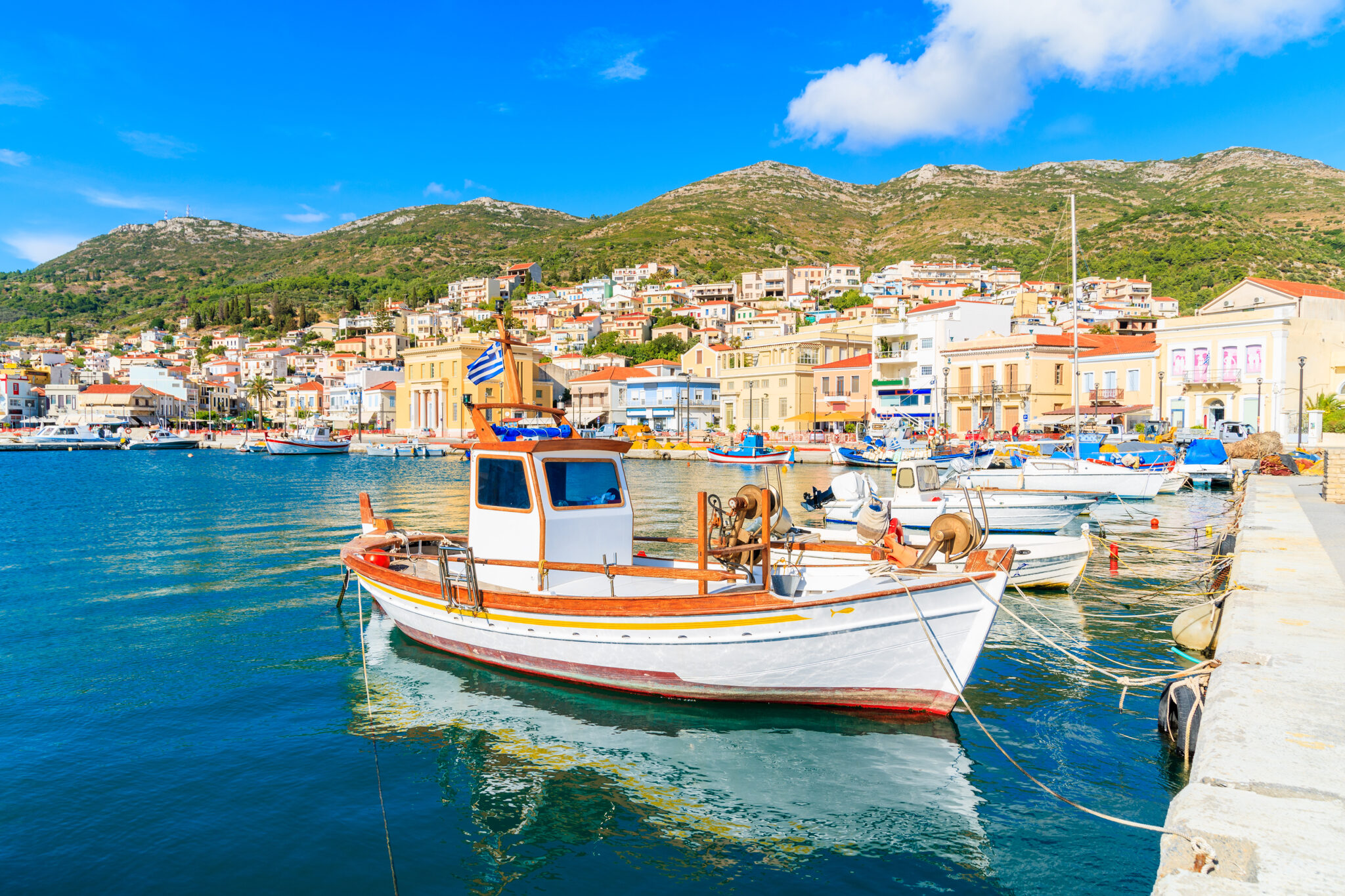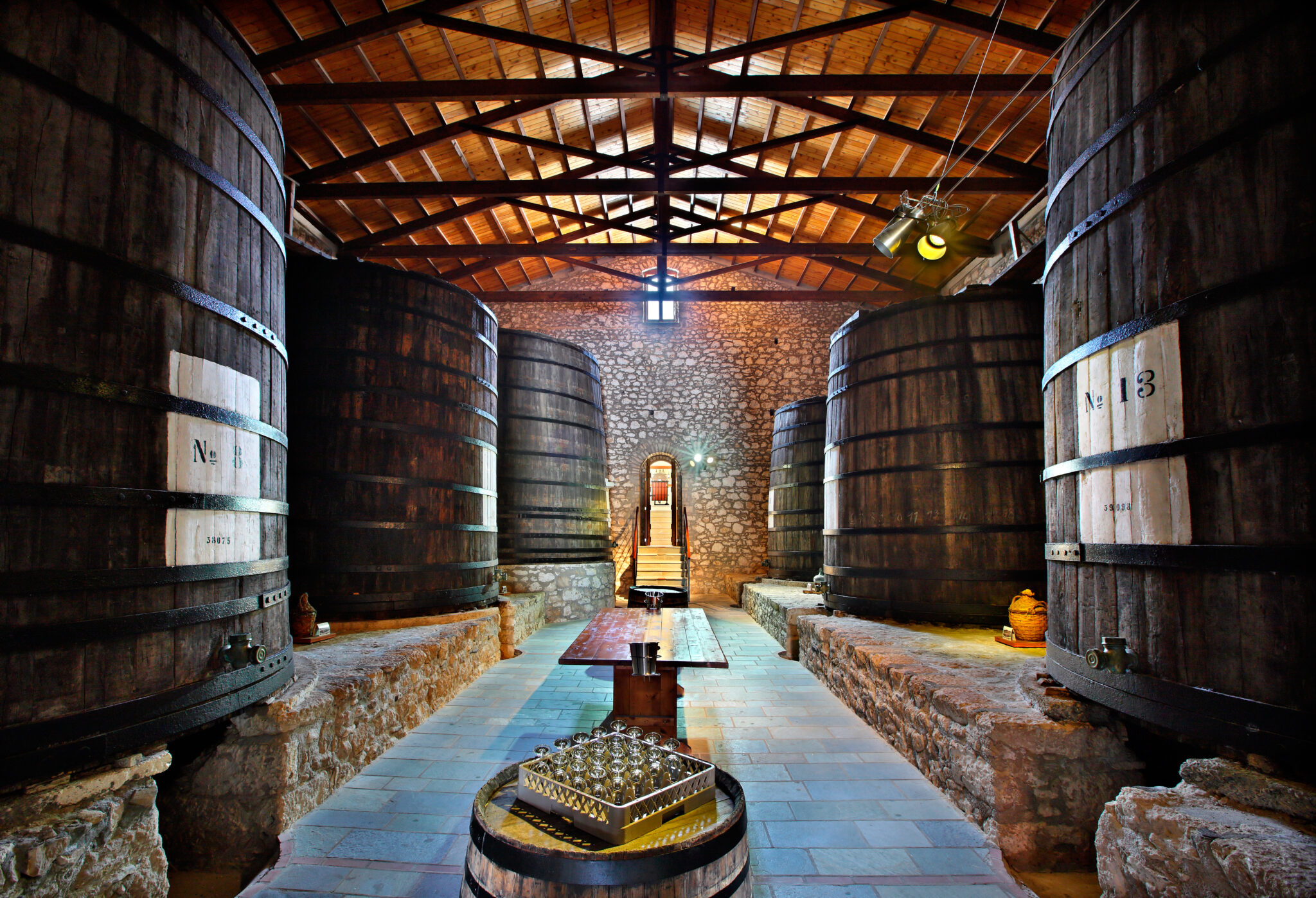Lining the steep northeastern shore of a deep bay, beachless Vathi (also known as Vathy and more confusingly as Samos) is the administrative centre and one of the three main ports. Its seafront is a kilometre long with many neoclassical buildings that reflect the former prosperity of the town. Taking over from Chora in 1854 as the island capital, Vathi became an important part of the tobacco trade after the phylloxera disease wiped out vineyards and growers looked for an alternative crop.
Today, it is a sleepy town mostly dedicated to tourism and it a pleasant place to explore the old neighbourhoods and stroll the elegant streets with vibrant colours and overhanging balconies.
Ano Vathi
In the pretty 17th century settlement above the port, wood framed houses with pastel facades and terracotta rooves are huddled together with hanging bay windows in the Venetian style protrude over narrow cobbled streets. Moving up from the coast better to resist pirate attacks, At the highest point is Ai Giannakis, a quadruple domed church and a lovely example of post-byzantine architecture with splendid views over the gulf.
Samos Wine Museum
In a stately stone building that once operated as a winery is a museum dedicated to the internationally acclaimed Muscat wines. Run by the Union of Vinicultural Cooperative, it is the best place to dive into the island’s wine culture. Photographs and tools from the last century of production illustrate the history of wine making on Samos, while tastings are arranged to sample the delicate sweet wines that have bought the island fame for many years. Samos Wine Museum (Tel.: 22730 87510, www.samoswine.gr, €5)
Archaelogical Museum of Vathi
The sculptures and statuary from Samos in ancient times were considered among the finest and the examples displayed in the museum here show why. The new wing holds the impressive Kouros from Heraion, a huge statue of a male youth. Dating from 580 BC, it is an offering to the goddess Hera, and it is the largest freestanding sculpture surviving from ancient Greece. Pieces of the kouros were found in strange locations; its left thigh was part of a wall in a Hellenistic house and only discovered in 1973, while its forearm was a step for a Roman cistern. At nearly 5 metres tall the gallery had to be rebuilt to accommodate it.
The rest of the museum has a pottery collection, a selection of bronze griffin heads which is the symbol of Samos, and the headless Geneleos family statues. There are rare fragments of wooden furniture preserved by Herion’s marshy soil, and a group of tributary gifts from ancient cities all over the empire that affirm the importance of the shrine to Hera.
Read also:
Samos: A noble island with mountains and lovely seas
Flavours of Samos: From Traditional Tavernas to Modern Gourmet Restaurants










